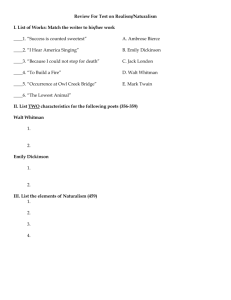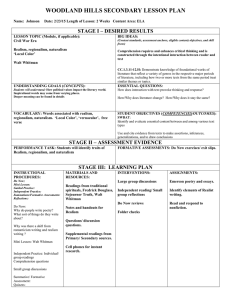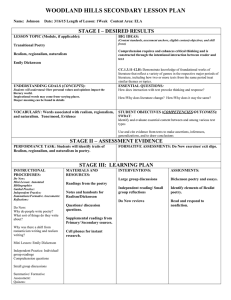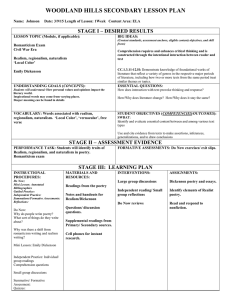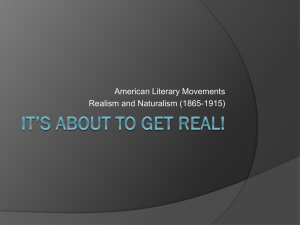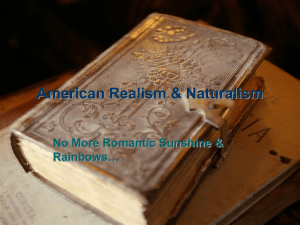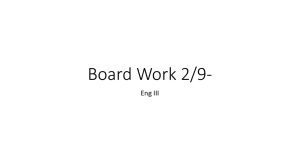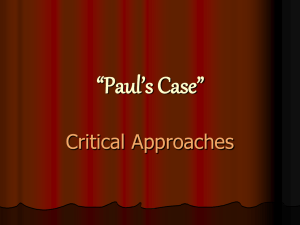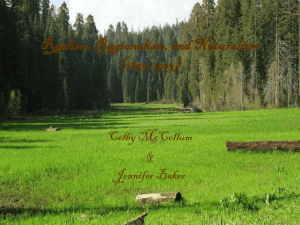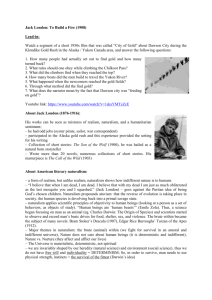American Realism, Naturalism, and Local Color
advertisement
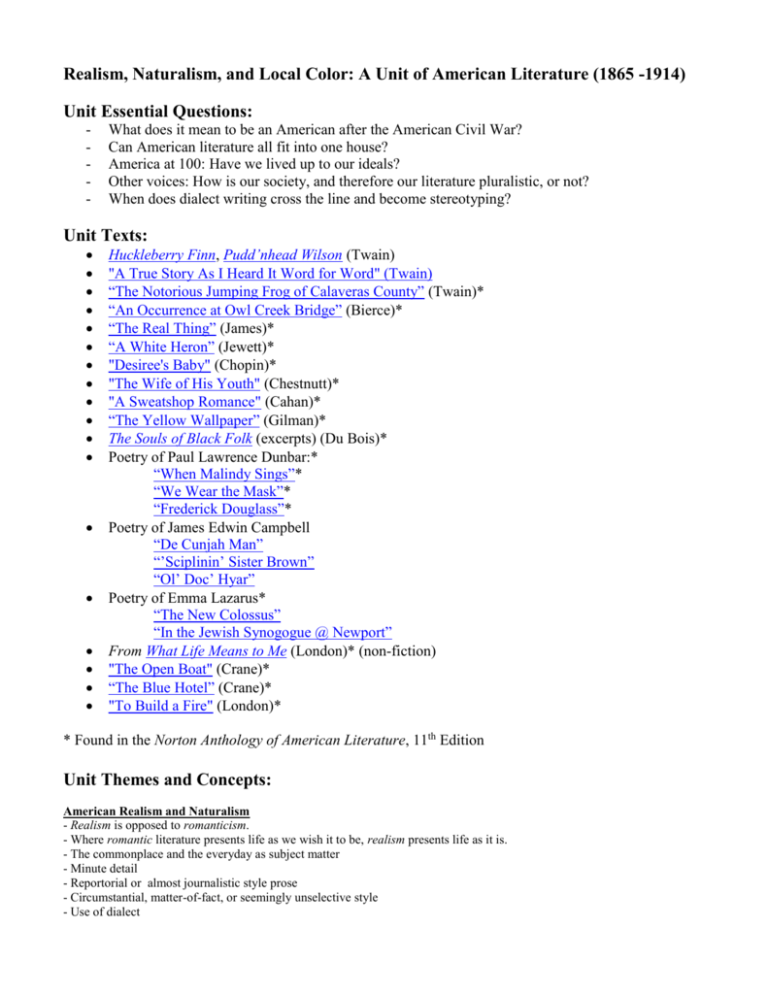
Realism, Naturalism, and Local Color: A Unit of American Literature (1865 -1914) Unit Essential Questions: - What does it mean to be an American after the American Civil War? Can American literature all fit into one house? America at 100: Have we lived up to our ideals? Other voices: How is our society, and therefore our literature pluralistic, or not? When does dialect writing cross the line and become stereotyping? Unit Texts: Huckleberry Finn, Pudd’nhead Wilson (Twain) "A True Story As I Heard It Word for Word" (Twain) “The Notorious Jumping Frog of Calaveras County” (Twain)* “An Occurrence at Owl Creek Bridge” (Bierce)* “The Real Thing” (James)* “A White Heron” (Jewett)* "Desiree's Baby" (Chopin)* "The Wife of His Youth" (Chestnutt)* "A Sweatshop Romance" (Cahan)* “The Yellow Wallpaper” (Gilman)* The Souls of Black Folk (excerpts) (Du Bois)* Poetry of Paul Lawrence Dunbar:* “When Malindy Sings”* “We Wear the Mask”* “Frederick Douglass”* Poetry of James Edwin Campbell “De Cunjah Man” “’Sciplinin’ Sister Brown” “Ol’ Doc’ Hyar” Poetry of Emma Lazarus* “The New Colossus” “In the Jewish Synogogue @ Newport” From What Life Means to Me (London)* (non-fiction) "The Open Boat" (Crane)* “The Blue Hotel” (Crane)* "To Build a Fire" (London)* * Found in the Norton Anthology of American Literature, 11th Edition Unit Themes and Concepts: American Realism and Naturalism - Realism is opposed to romanticism. - Where romantic literature presents life as we wish it to be, realism presents life as it is. - The commonplace and the everyday as subject matter - Minute detail - Reportorial or almost journalistic style prose - Circumstantial, matter-of-fact, or seemingly unselective style - Use of dialect - Individuals are capable of acting with autonomous motivation - A kind of photographic record of surface phenomena, and reveals the essential structure of reality in a manner that is aesthetically pleasing and consistent - Normal rather than heightened perception of reality - Plausible rather than imaginative - Industrial fiction Naturalism (a literary movement) - More selective form of realism of subject matter - A product of post-Darwinism - Presentation of subject matter with scientific objectivity, elaborate documentation, medical frankness. - Characters tend to exhibit strong animal desires yet are average people with modest experiences, simple emotions. - Not as symbolic or metaphoric - Verisimilitude - Lacking image-making, rhetorical embellishment, and metaphoric allusiveness Thematic Concerns of Naturalism - Humans exist entirely in an order of nature. - There is no soul. - There is no spiritual world beyond the natural world. - Atavism - We are products of nature and nurture; of heredity and environment. - Humans inherit compulsive instincts and are then subject to social and economic forces. Local Color - Detailed representations of setting, dialect, clothes, customs, dress, ways of thinking and feeling distinctive to a particular region. - Often dwell on sentimental or comic representation of superficial particularities of a region. Skills and Assessments: - Personal writing Responses to non-fictional writing Critical passage analysis Identification of key themes, writing styles, and current cultural parallels Literary forms: short story, poetry, non-fiction, essay, novel, film
